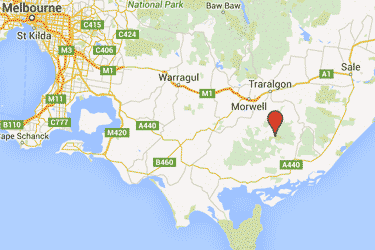Exploring roads less travelled in the cooler parts of Australia and New Zealand
Home Articles Places Categories Videos Maps About Sitemap

If walking in old-growth mountain ash and myrtle beech forest appeals to you, then Victoria's Tarra Bulga National Park may sound tempting. It lured me when passing through South Gippsland, and while the forest itself was lovely, visiting the area can be a bitter-sweet experience.
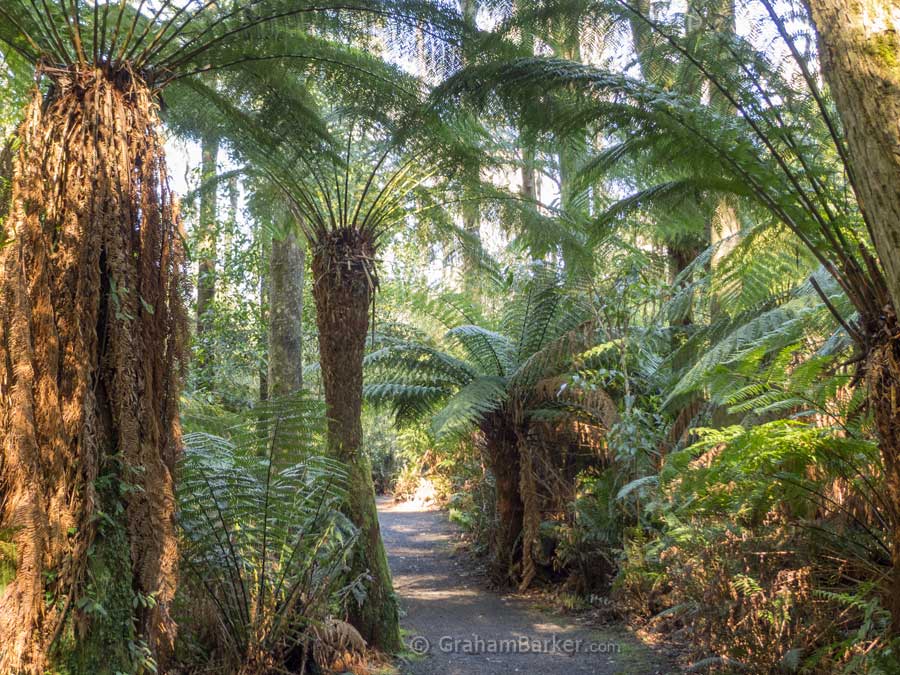
The national park is a small remnant of forest in a region mostly developed for agriculture ... and therein lies my discomfort. The Tarra Bulga forest appeals most to those who love undeveloped nature. But getting there involves driving through countryside which is the exact opposite, and which serves to emphasise - dramatically - just how little has been left unspoiled.
I started out from the large town of Traralgon and headed the short distance south towards the Strzelecki Ranges. The first section is through flat farmland, dominated by the massive smokestacks - and oodles of belching smoke - of the coal-fired Loy Yang B power station. Eventually the road passes right past the power station and heads upwards into the hills.
I was eager for the unspoiled forest scenery to begin, but it was a long wait. From several vantage points it was clear that almost all of the hilly landscape consisted of either cleared farms, tree farms, or large tracts which had obviously been logged. In some sections the devastation was very fresh and looked eerily apocalyptic.
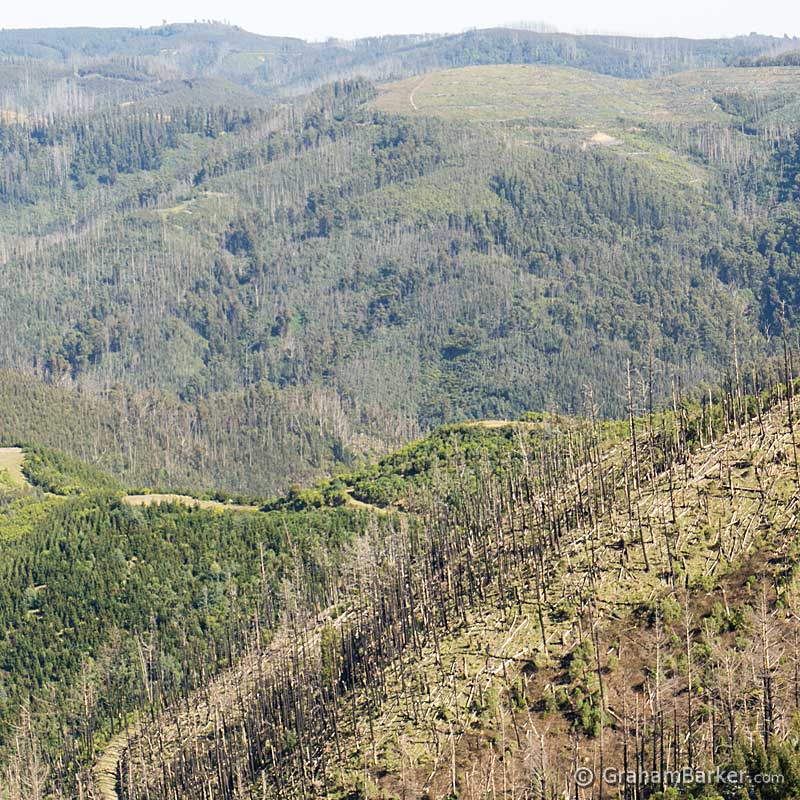
Some of the logging country which surrounds Tarra Bulga
Eventually I found the Tarra Bulga National Park and its car park, and the visitor centre which is open on weekends and holidays only. By then it had become painfully obvious that what forest remained was just a tiny portion of what once existed in these hills. Nevertheless, it looked beautiful, so I went walkies.
Several walking trails cross the park, with good firm surfaces. You don't need to venture far to be immersed in something very special. Most obvious are the giant mountain ash, the second tallest tree species in the world. The specimens here are far from their tallest examples, but are still very striking.
Complementing the giants are the myrtle beech, blackwood, hazel, and tree ferns. All set to a background of native birdsong and spiced with assorted forest fragrances I couldn't identify. If you like wandering through gorgeous lush forest, Tarra Bulga will delight the senses.
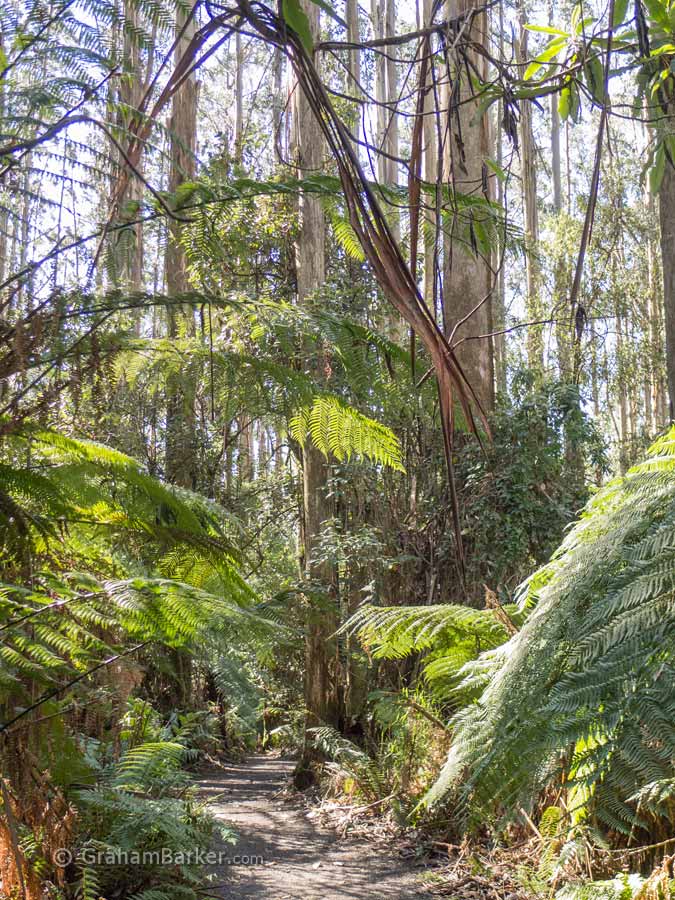
Most walks are gentle, while one descends a gully to reach the suspension bridge which is a feature of the park. The bridge provides some views, and nearby another trail follows a ferny gully to provide some contrast with the ridge. Quick strolls are possible, but the sheer beauty of the forest warrants some quality time to take it all in.
Tarra Bulga preserves just a tiny remnant of the vast forests that once covered these ranges and their surrounds. That fact hits you in the face as soon as you leave the park, and are once again surrounded by farms, tree plantations and logged bare earth.
I don't mean to put anyone off visiting Tarra Bulga. The forest is exquisitely beautiful and well worth visiting - I’d recommend it for anyone passing through the area. It's just that people who value the preservation of forests in their natural state will see much to be sad about. The great joy of the forest, versus the reality of how much of it has been destroyed, are in greater contrast here than most places I've visited.
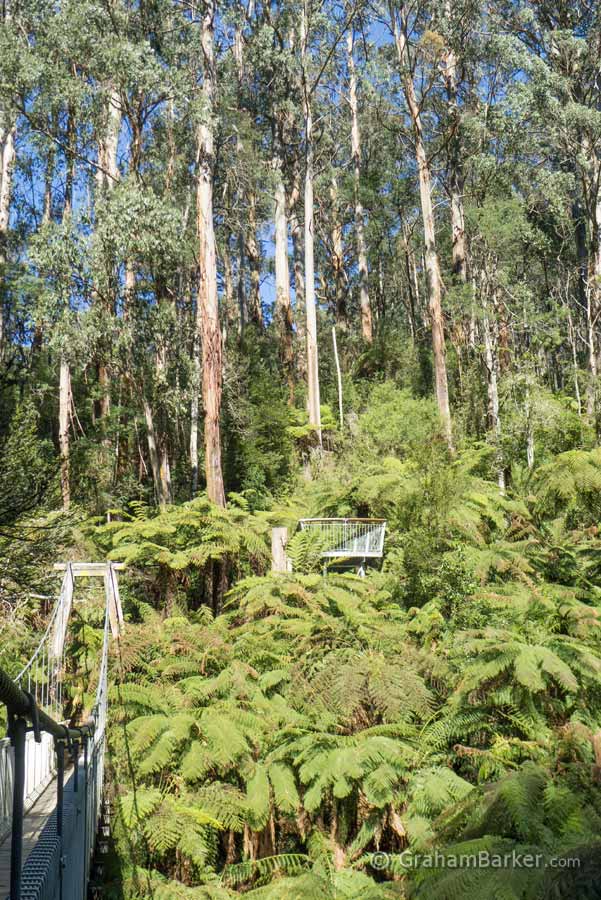
Suspension bridge (left) and lookout (centre)
Tarra Bulga National Park (on Parks Victoria website)
